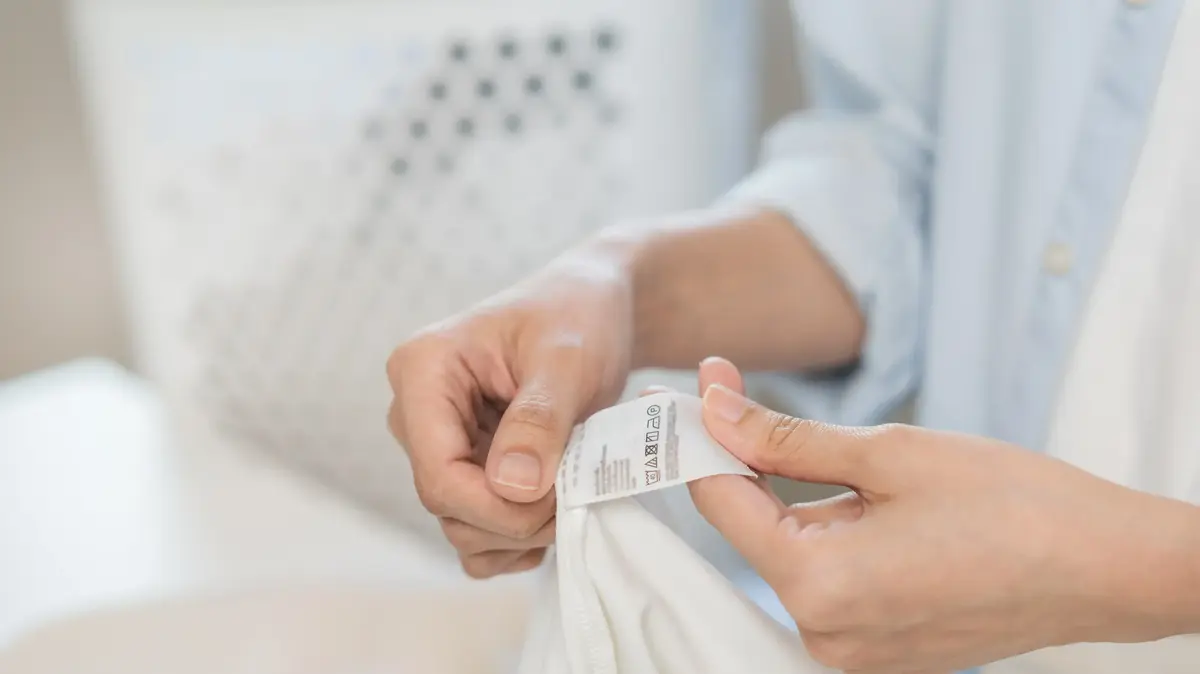- Click to share on Facebook (Opens in a new window)
- Click to share on Twitter (Opens in a new window)
- Click to share on LinkedIn (Opens in a new window)
- Click to email a friend (Opens in a new window)
This is the most effective mask against covid-19 1:24
(CNN) –– The use of face masks and coatings is recommended ––and in some places mandatory–– in public spaces to help stop the spread of covid-19.
But what type of fabric (or homemade) mask offers the best protection?
- LOOK: How to make your own protective mask
Researchers at Florida Atlantic University conducted experiments with different materials and styles of masks that are not for medical use, and found that a well-fitted face mask made from two layers of padded fabric was most effective in stopping the spread of cough drops and simulated sneezes.
The experiment also compared a slightly folded home mask - like what you can do with a scarf or a T-shirt -, a bandana-type face covering, and a non-sterile conical-style commercial mask that is generally available at drugstores.
Covid-19: what is the efficiency of wearing masks? 0:45The researchers explained that they chose to evaluate these styles of facial protection because they are available to the general public and do not deviate from the supply of medical-grade respirators and masks for healthcare workers.
"While there are some previous studies on the effectiveness of medical grade equipment, we don't have much information on fabric-based coatings that are most accessible to us at the moment," said Siddhartha Verma, assistant professor, Department of Ocean Engineering. and Mechanics from Florida Atlantic University and author of the study.
With the mask sewn from cotton, the drops traveled 6 centimeters.
"We hope that the visualizations presented in the study help convey the rationale for the recommendations for social distancing and the use of face masks," he added.
The study was published in the journal Physics of Fluids on Tuesday.
The World Health Organization recently assured that governments should encourage people to use non-medical cloth face masks, especially in environments where physical distance of at least 1 meter is not possible, as occurs in public transport. , in stores or other confined or crowded environments.
- READ: Wearing a mask at home may help stop the spread of the coronavirus among family members
In the United States, the Centers for Disease Control and Prevention recommends fabric face liners to protect yourself in places where social estrangement cannot be maintained.
Simulated cough and sneeze
In the experiment, a mannequin's head was adapted to simulate a person's nasal passages and was located 1.7 meters to approximate the height of an adult male. The researchers "triggered" the sneeze or cough with a hand pump and a smoke generator.
With a folded cotton scarf, the drops traveled 39 centimeters.
They then used a laser to detect the drops as they were ejected from the mannequin's head by sneezing and coughing, and mapped out the pathways of the secretions. They also examined how different designs and materials alter that path.
The main challenge for the researchers was to faithfully simulate a cough and a sneeze.
"The setup we've used (is) a simplified cough that is actually complex and dynamic," Verma said in a statement.
How to dispose of face masks? 1:09They found that drops from a simulated cough without any facial protection could travel more than 2.4 meters, while with a handkerchief they spread 90 centimeters, with a folded cotton handkerchief they traveled 39 centimeters, and with the cone-style mask they advanced approximately 20 centimeters. As for the sewn quilted fabric face mask, the drops spread just 6 centimeters.
"We found that, while unobstructed turbulent jets traveling up to 3.6 meters were observed, a large majority of the ejected droplets had fallen to the ground at that point," explained Manhar Dhanak, professor in the Department of Oceanic and Mechanical Engineering at the Florida Atlantic University and co-author of the study.
"It is important to note that both the number and concentration of the drops will decrease with increasing distance, which is the fundamental reason behind social distancing," he added.
With the cone-style mask, the drops traveled approximately 20 centimeters.
An increased number of threads in the tissue alone was not more effective, the researchers said. In her experiment, the handkerchief had the highest count and was the least effective.
They also indicated that their experiment could help healthcare professionals, medical researchers, and manufacturers evaluate the effectiveness of face masks.
The WHO recommends cleaning your hands before touching a mask, making sure it is not too loose and covers the mouth and nose. It also indicates that you should keep it in a clean bag if you plan to reuse it and wash it every day with hot soapy water.
covid-19masksmasksPandemic














